Chapter: Anatomy of Flowering Plants: An Introduction to Structure and Development : Flower
Floral Organs
Floral Organs
Flowers
are complex structures that consist of several organ types borne on a central
axis (the receptacle). In many species each flower is subtended by a modified
leaf-like structure termed a bract (Fig. 1.2), though bracts are absent from
some other species. Within each flower, the organs are arranged in distinct
bands (whorls) or in a spiral pattern (Figs 5.1, 5.2). The degree of fusion of
individual floral organs within each flower is normally characteristic of a
species (i.e. genetically determined). Fusion between similar organ types borne
in the same whorl is termed connation. Fusion between different organ types
borne in adjacent whorls is termed adnation.
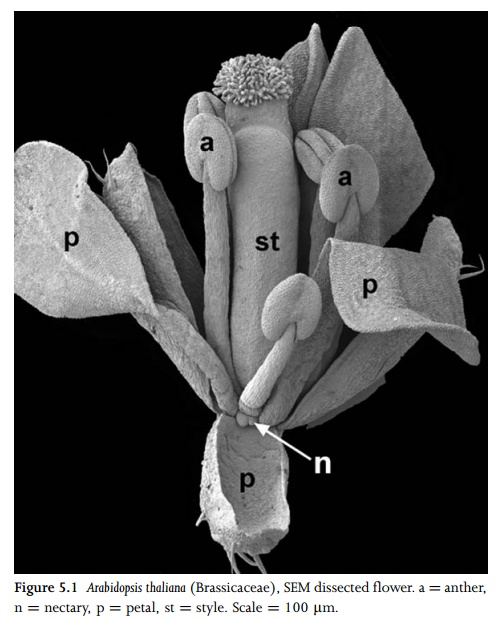
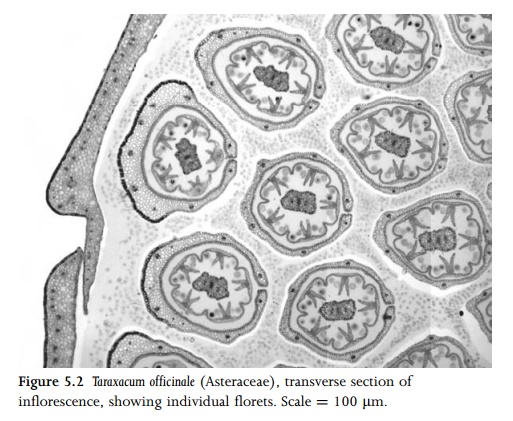
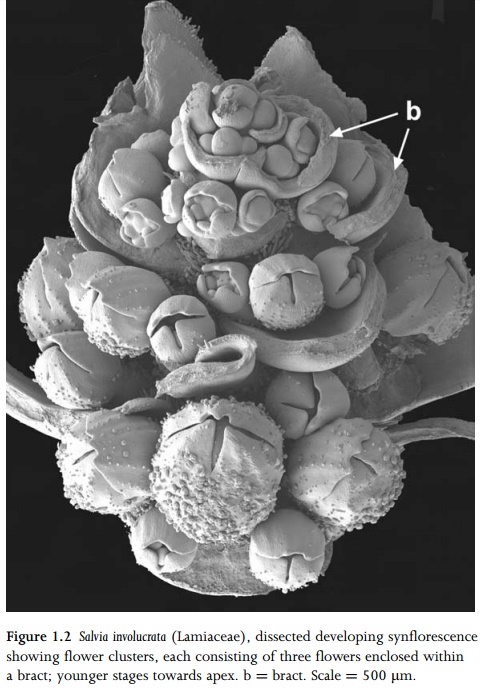
The outer
two types of floral organs (collectively the perianth) are modified leaf-like
structures, termed sepals (collectively the calyx, or sometimes the first
whorl) and petals (collectively the corolla, or the second whorl). In many
monocots and magnoliids the perianth organs are morphologically
indistinguishable from each other, and are collectively termed tepals, rather
than differentiated into sepals and petals. Enclosed within the perianth are
the stamens, which are collectively termed the androecium, or sometimes the
third whorl, though they are often borne in two or more distinct whorls. The
carpels (collectively the gynoecium, sometimes termed the fourth whorl) are
borne in the centre of the flower, and normally terminate the floral axis.
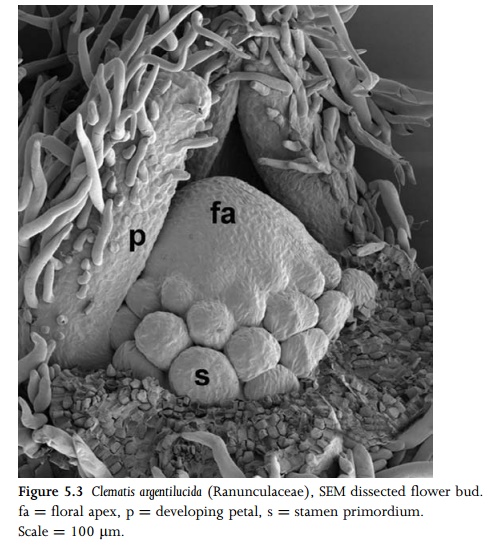
This
general pattern varies considerably among angiosperm groups, and many species
possess unisexual flowers. The grass flower is typically subtended by a
bract-like structure, the palea, that surrounds three (or, more commonly, two)
reduced structures termed lodicules, which are normally interpreted as homologous
with a single perianth whorl (probably the inner tepals) of other monocots.
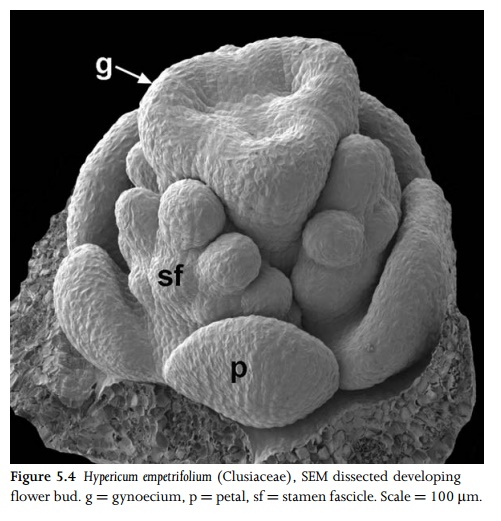
Floral
organ primordia are typically initiated from the outside inwards, in
centripetal (acropetal) sequence towards the floral apex (Fig. 5.3). For
example, in Drimys the innermost stamens are the last to be initiated in the
developing bud, though they are the largest and the first to dehisce in the
open flower113. However, in some species certain floral organs, either
within a single whorl or in more than one whorl, are initiated in a different
sequence or in groups (fascicles) (Fig. 5.4). For example, the stamens of some
polyandrous palms are initiated centrifugally.
Related Topics